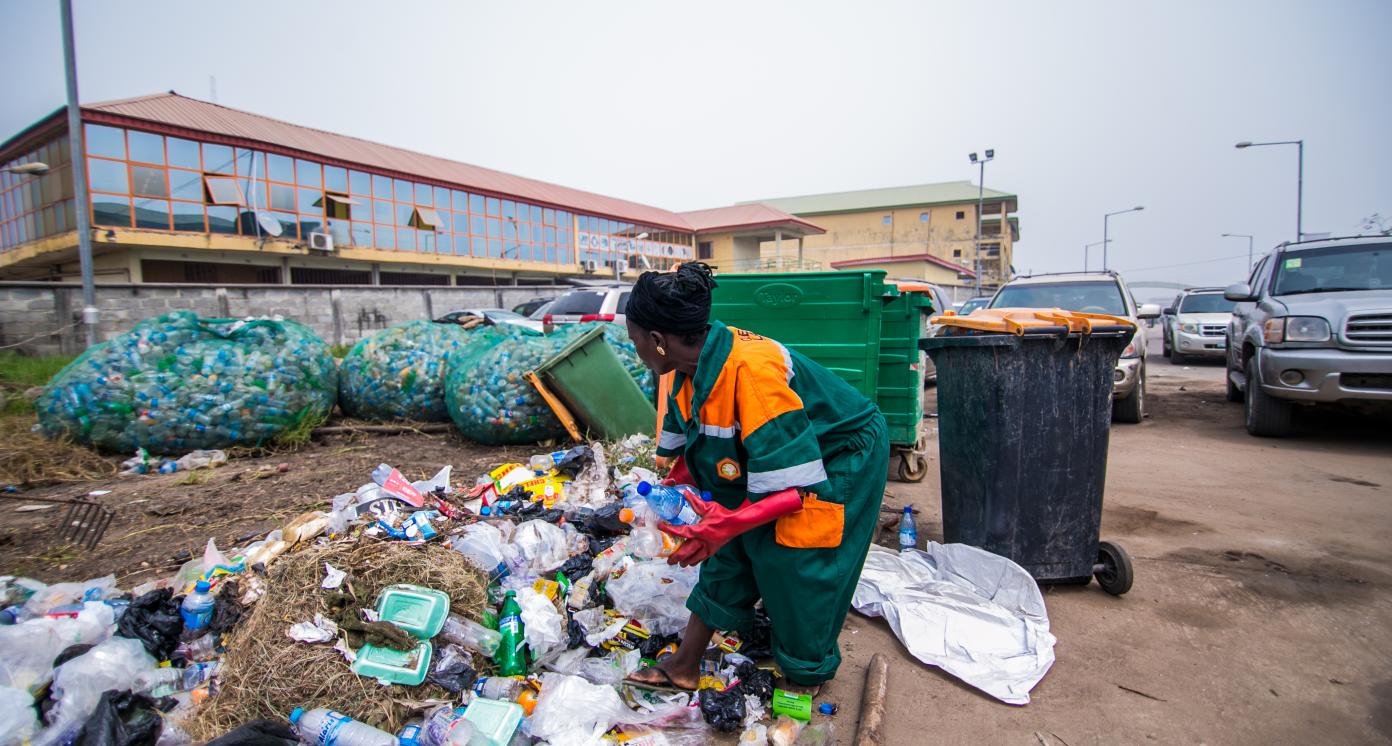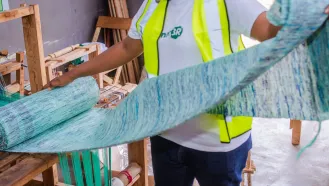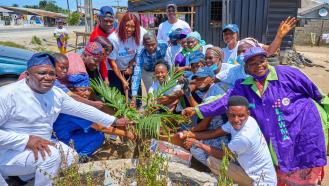Plastic recycling facilities






Business Model Description
Build and operate recycling and recovery facilities for plastic disposables.
Expected Impact
Mitigate against the negative environmental effects of waste and recover energy sources.
How is this information gathered?
Investment opportunities with potential to contribute to sustainable development are based on country-level SDG Investor Maps.
Disclaimer
UNDP, the Private Finance for the SDGs, and their affiliates (collectively “UNDP”) do not seek or solicit investment for programmes, projects, or opportunities described on this site (collectively “Programmes”) or any other Programmes, and nothing on this page should constitute a solicitation for investment. The actors listed on this site are not partners of UNDP, and their inclusion should not be construed as an endorsement or recommendation by UNDP for any relationship or investment.
The descriptions on this page are provided for informational purposes only. Only companies and enterprises that appear under the case study tab have been validated and vetted through UNDP programmes such as the Growth Stage Impact Ventures (GSIV), Business Call to Action (BCtA), or through other UN agencies. Even then, under no circumstances should their appearance on this website be construed as an endorsement for any relationship or investment. UNDP assumes no liability for investment losses directly or indirectly resulting from recommendations made, implied, or inferred by its research. Likewise, UNDP assumes no claim to investment gains directly or indirectly resulting from trading profits, investment management, or advisory fees obtained by following investment recommendations made, implied, or inferred by its research.
Investment involves risk, and all investments should be made with the supervision of a professional investment manager or advisor. The materials on the website are not an offer to sell or a solicitation of an offer to buy any investment, security, or commodity, nor shall any security be offered or sold to any person, in any jurisdiction in which such offer would be unlawful under the securities laws of such jurisdiction.
Case Studies
Country & Regions
- Nigeria: South West
Sector Classification
Infrastructure
Development need
Nigeria will face several challenges in the next decades, with the infrastructure sector as the basis for the country’s sustainable development due to its cross-cutting characteristics. There are several potential areas for investments. These opportunities focus on, but do not exclusively relate to, serving rapidly growing urban populations, and include electricity generation or waste management.
Policy priority
National Integrated Infrastructure Master Plan 2019 - The value of Nigeria’s core infrastructure stock represents only about 25% of gross domestic product (GDP) according to 2013 estimates, a value significantly lower than the global benchmark of 70%. This low stock has been attributed mainly to low public and private spending on infrastructure.(1)
Gender inequalities and marginalization issues
Poor infrastructure can exacerbate the gender gap. In low income countries, women are responsible for over 70% of water and fuel wood collection. The time spent on water collection adds up to 200 million hours every day. Unsafe and low security transport also disadvantages women, by exposing them to violence. This affects their wellbeing and workforce participation.(26)
Investment opportunities introduction
To efficiently revamp infrastructure across various sectors, estimated investment of USD 30 trillion is required over 30 years (2014 – 2043). This estimate includes investments in the following priority areas: Energy, transport, social infrastructure and housing. (1)(2)
Key bottlenecks introduction
The low infrastructure stock has been attributed mainly to low public and private spending on infrastructure.(1)
Development need
Nigeria generates 65 million metric tons of waste annually.(3) According to indicators for SDG 14 – Life below water (for which Nigeria is currently underscoring), approximately 81% of plastic waste is handled improperly.(4)
Waste Management
Pipeline Opportunity
Plastic recycling facilities
Build and operate recycling and recovery facilities for plastic disposables.
Business Case
Market Size and Environment
Nigeria produces 2.5 million tons of plastic waste each year.
In 2018, Nigeria imported plastics and similar articles worth over USD 1.6 billion.(5) It requires action to avoid releasing them into the natural environment.
The amount of plastic bottles used in Nigeria doubled between 2016 and 2019, to approximately 150 million metric tons annually. According to a study, half of those bottles are consumed in Lagos only, and 80% of them do not undergo recycling.(6)
Nigeria produces 2.5 million tons of plastic waste each year. The average per capita consumption of plastics has increased by approximately 5% every year since 2007, from 4.0 kg to 6.5 kg in 2017 and an estimated 7.5 kg in 2020.(7)
Indicative Return
15% - 20%
Based on a case study, the benchmark internal rate of return is estimated at 19%. This rate assumes a fully integrated plastics recovery and reprocessing facility with a production capacity of 80,000 tons of plastics per year and a capital cost of around USD 37 million.(8)
Investment Timeframe
Long Term (10+ years)
The investment period is estimated to be 15 - 25 years, based on sectoral benchmark information.
Ticket Size
> USD 10 million
Market Risks & Scale Obstacles
Business - Supply Chain Constraints
Impact Case
Sustainable Development Need
Plastics are a problem mostly due to their non-biodegradable nature and improper disposal leading to pollution. Global plastic production exceeded 311 million metric tons. From 2.5 billion metric tons of solid waste generated globally, about 275 million tons were plastic waste.(12)
In 2010, Nigeria was suspected of being the world's fifth biggest polluter of the marine environment, after reportedly releasing 0.34 million tons of plastic waste into the ocean.(13)
Nigeria generates 65 million metric tons of waste annually.(3) Lagos, Nigeria's biggest city, generates about 10,000 tons of urban waste every day.(14) According to indicators for SDG 14, approximately 81% of plastic waste is handled improperly in Nigeria.(4)
Gender & Marginalisation
Poor infrastructure can exacerbate the gender gap. In low income countries, women are responsible for over 70% of water and fuel wood collection. The time spent on water collection adds up to 200 million hours every day.(26)
Expected Development Outcome
Recycled plastic reduced dependency on imports of raw materials from other countries. Recycling helps create a cleaner environment, by keeping tons of plastic out of the waste stream and stopping plastics polluting the ocean. It also improves aesthetics which will promote tourism and foreign direct investment.
Investments could reduce waste and pollution, facilitate an improved circular economy approach, increasing savings on energy and prevent greenhouse gas emissions.
Gender & Marginalisation
Investments in waste management can help women living near wild dumping sites enjoy a cleaner and safer environment. These women are largely responsible for supplying household needs.
Primary SDGs addressed

3.9.3 Mortality rate attributed to unintentional poisoning
Mortality rate attributed to unintentional poisoning (Male): 0.0173 per 100,000. Mortality rate attributed to unintentional poisoning (Female): 0.0192 per 100,000.(27)
By 2030: 0 (27)

12.4.2 (a) Hazardous waste generated per capita; and (b) proportion of hazardous waste treated, by type of treatment
12.5.1 National recycling rate, tons of material recycled
Hazardous waste generated per capita: 73.28%. Proportion of waste treated: 0.24%. (27)
0.24% in 2015. (27)
N/A
N/A

14.1.1 (a) Index of coastal eutrophication; and (b) plastic debris density
N/A
N/A
Secondary SDGs addressed



Directly impacted stakeholders
People
Planet
Corporates
Indirectly impacted stakeholders
People
Outcome Risks
Without proper filtration, many harmful compounds may be released into the atmosphere. Abandoned dump sites can severely damage the surrounding environment.
Harmful chemicals can leach into water and soil, causing water and soil pollution. When mixed with rainwater, a poisonous mixture (leachate) is formed, which is highly dangerous for water supplies.(15)
The bleaching process uses harsh chemicals that can cause health problems on exposure if proper measures are not taken.(15)
Impact Risks
Efficiency risk given the heavy involvement of public bodies (with higher costs) in the waste management sector
Execution risk if activities are not delivered as planned and do not result in the desired outcomes
Unexpected impact risk given recovery and recycling facilities may generate negative environmental impact if not handled properly
Impact Classification
What
Investing in a plant to melt and reuse plastics is likely to have a positive impact because it limits plastic waste and pollution.
Who
Producers, natural environment, households that are aggrieved due to inadequate access to recycling facilities.
Risk
Although there are already several recycling plants in Nigeria, the model requires proper technology and trained people. It can worsen the ecological situation if improperly managed.
Impact Thesis
Mitigate against the negative environmental effects of waste and recover energy sources.
Enabling Environment
Policy Environment
National Policy on Plastic Lifecycle Management: The Federal government has implemented the National Policy on Plastic Lifecycle Management to drive resource efficiency, cleaner production and protection of the environment as stated in section 20 of the 1999 Constitution.
Basel Convention: This convention aims to reduce hazardous waste generation and promote environmentally sound management of hazardous wastes. It establishes a regulatory system for cases where cross-border movements are allowed.(16)
Montreal Protocol: This protocol establishes provisions for consumption and production of almost 100 chemicals causing ozone depletion.(17)
The Federal government invests in different types of projects, including plastic recycling plants in 26 cities in Nigeria, material recovery baling centers, transfer loading stations and briquetting plants.(18)
At the municipal level, the Lagos State Waste Management Authority (LAWMA) launched a private sector participation programme for waste management, awarding commercial players annually extendable concessions on waste collection in designated territories.(18)
Financial Environment
Financial incentives: The Nigerian Investment Promotion Commission Act incentivizes investment in waste management by granting the 'unconditional transferability' of profits, dividends and proceeds from sale of assets through authorized dealer banks.(23)
Regulatory Environment
National Policy on the Environment 1999 (Sub section 6.1, Section 6.0: This policy relates to issues regarding climate change. It indicates the government's strategy towards preventing climate change.(19)
National Environmental (Sanitation and Wastes Control) Regulations S. I. No. 28 of 2009: These regulations establish a legal framework for sustainable and environmentally friendly practices in environmental sanitation and waste management to minimize pollution.(20)
National Policy on Municipal and Agricultural Waste Management 2012: This policy governs generation and sorting, storage, collection, transportation, resource recovery, treatment/disposal, and minimization of the release of organic pollutants.(21)
National Policy on Solid Waste Management 2018: This policy provides a framework for integrating efforts between public actors, non-governmental organizations and other stakeholders in waste management.(22)
National Policy on Plastic Life Cycle Management (Draft) 2019: This draft policy establishes a framework to enhance resource efficiency, cleaner production and protection of the environment.(18) National Policy on Chemical Management 2010
Marketplace Participants
Private Sector
Lexsz Plastics Limited, WeCyclers, CocaCola, OkwuEco
Government
Federal government, State government - Lagos State Waste Management Authority
Target Locations
Nigeria: South West
References
- (1) National Planning Commission (2015). National Integrated Infrastructure Master Plan.
- (2) Federal Republic of Nigeria (2017). Economic Recovery and Growth Plan 2017 - 2020. Abuja: Ministry of Budget and National Planning.
- (3) Benson, A. Recycling: How These Small Businesses Make Millions Selling Aluminium Monthly.
- (4) SDG Center for Africa and Sustainable Development Solutions Network (2019). 2019 Africa: SDG Index and Dashboards Report.
- (5) United Nations. UN Comtrade Database.
- (6) Ibokun, Y. (2019). 'Nigeria Enlists Big Beverage Companies to Fight Plastic Waste,' Bloomberg Businessweek, November 13. https://www.bloomberg.com/news/articles/2019-11-13/nigeria-enlists-big-beverage-companies-to-fight-plastic-waste.
- (7) Benson, A. Recycling: How These Small Businesses Make Millions Selling Aluminium Monthly.
- (8) WRAP (2009). A financial assessment of recycling mixed plastics in the UK, https://archive.wrap.org.uk/sites/files/wrap/WRAP%20A%20financial%20assessment%20of%20recycling%20mixed%20plastics%20in%20the%20UK.pdf
- (9) Duru, R., Ikpeama, E.E. and Amaka, J.A. (2019). Challenges and prospects of plastic waste management in Nigeria,' Waste Disposal and Sustainable Energy 1: 117-126. https://www.researchgate.net/publication/334810551_Challenges_and_prospects_of_plastic_waste_management_in_Nigeria
- (10) Kazoora,J. (2019). Exploring the future of plastic recycling industries in Uganda. http://dissertations.mak.ac.ug/handle/20.500.12281/7252
- (11) CCPA. FREQUENTLY ASKED QUESTIONS - PLASTICS. https://www.ccpa.net/DocumentCenter/View/5384/Plastic_FAQs?
- (12) Ellen MacArthur Foundation (2016). The New Plastics Economy: Rethinking the Future of Plastics. https://www.ellenmacarthurfoundation.org/publications/the-new-plastics-economy-rethinking-the-future-of-plastics.
- (13) Dumbili, E. and Henderson, L. (2020). 'The Challenge of Plastic Pollution in Nigeria,' Plastic Waste and Recycling, 569–83. https://www.researchgate.net/publication/338805077_The_Challenge_of_Plastic_Pollution_in_Nigeria
- (14) Bakare, W. (2020). 'Solid Waste Management in Nigeria,' BioEnergy Consult. https://www.bioenergyconsult.com/solid-waste-nigeria/.
- (15) Baltimore Urban Debate League (2012). Recycling. http://budl.org/wp-content/uploads/2012/07/Recycling-Supporting-Docs.pdf
- (16) Basel Convention. http://www.basel.int/TheConvention/Overview/TextoftheConvention/tabid/1275/Default.aspx
- (17) United Nations (1987). Montreal Protocol on Substances that Deplete the Ozone Layer (with annex). Concluded at Montreal on 16 September 1987. https://treaties.un.org/doc/publication/unts/volume%201522/volume-1522-i-26369-english.pdf
- (18) United Nations Industrial Development Organization (2019). Current status of waste management and plastic management in Nigeria, Policy and Industry Aspects. http://www.unido.or.jp/files/191007_UNIDO-Seminar_Nigeria.pdf
- (19) National Policy on the Environment. http://extwprlegs1.fao.org/docs/pdf/nig176320.pdf
- (20) National Environmental (Sanitation and Wastes Control) Regulations. https://www.nesrea.gov.ng/publications-downloads/laws-regulations/
- (21) Household Waste Disposal Laws in the Federal Republic of Nigeria. https://scholarworks.gsu.edu/cgi/viewcontent.cgi?article=1040&context=iph_capstone
- (22) All Africa (2020). Nigeria: Timely National Policy On Solid Waste Management. https://allafrica.com/stories/202007200029.html
- (23) World Bank (2020). 2019 Investment Policy and Regulatory Review: Nigeria. https://openknowledge.worldbank.org/handle/10986/33596
- (24) WOIMA Corporation (2021). Drowning in waste – Case Lagos, Nigeria. https://woimacorporation.com/drowning-in-waste-case-lagos-nigeria/
- (25) Wecyclers (2021). Recycle with Wecyclers. http://www.wecyclers.com/
- (26) OECD (2019). Gender Equality and Sustainable Infrastructure. https://www.oecd.org/gov/gender-mainstreaming/gender-equality-and-sustainable-infrastructure-7-march-2019.pdf
- (27) Federal Republic of Nigeria (2017). Implementation of the SDGs: a national voluntary review. https://sustainabledevelopment.un.org/content/documents/16029Nigeria.pdf

















